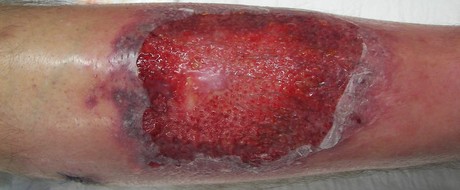Mystery disease identified and potential cure found

An international research team has identified the mysterious disease afflicting families in Belgium, England and France for the past several decades — as well as a potential cure. Their study has been published in the journal Science Translational Medicine.
The research team identified the disease as pyrin-associated autoinflammation with neutrophilic dermatosis (PAAND), which manifested itself in the form of severe skin lesions, fevers, pain and exhaustion. Every generation, half of the children of the people with this disease developed the same symptoms. Doctors had been previously unable to identify the disease or find any effective treatment.
“Detailed work by clinicians told us that we were dealing with a genetic disease,” said Dr Adrian Liston from VIB and KU Leuven in Belgium. “Thanks to advances in DNA sequencing technology, we were able to sequence the genome of Belgian, English and French patients and find the mutation causing the disease.”
The researchers pinpointed the cause as a mutation found in a gene called MEFV. The gene was already known to cause an autoinflammatory disease called familial Mediterranean fever (FMF) in patients who inherited mutated copies from both their parents. FMF often skips generations, but PAAND is passed on from generation to generation because one single copy of the mutation is enough to cause the disease. Therefore, patients’ children have a 50–50 chance of developing PAAND.
“The PAAND mutation causes the body to respond as if there is an infection,” said Dr Seth Masters from Melbourne’s Walter and Eliza Hall Institute. “This leads to the skin making the inflammatory protein interleukin-1β, which causes skin lesions, fevers and pain.”
Understanding the biological basis for the disease enabled the researchers to effect a treatment by repurposing an anti-arthritis drug, anakinra (Kineret), which targets interleukin-1β. The results in the first volunteer, from an English family, were striking, with a rapid clearance of skin lesions and a complete recovery from fevers and pain. A larger trial is now beginning in the Flemish patients to see if this targeted treatment will act as a complete cure.
Dr Masters said the research that led to this breakthrough in treatment is part of a growing area of precision medicine, noting, “The genetic analysis that is available to us now allows us to penetrate the cause of disease in a way that was out of our reach previously.
“It leads to specific, targeted therapies for conditions that previously were not even diagnosed.”
Precision medicine is now being trialled in Victoria as part of the Melbourne Genomics Health Alliance.
'Low-risk' antibiotic linked to rise of dangerous superbug
A new study has challenged the long-held belief that rifaximin — commonly prescribed to...
Robotic hand helps cultivate baby corals for reef restoration
The soft robotic hand could revolutionise the delicate, labour-intensive process of cultivating...
Stem cell experiments conducted in space
Scientists are one step closer to manufacturing stem cells in space — which could speed up...




